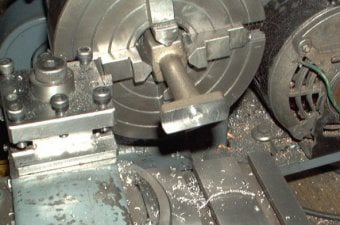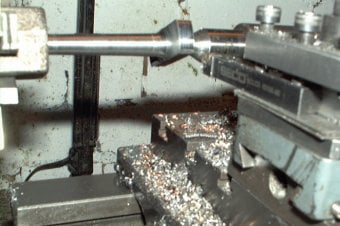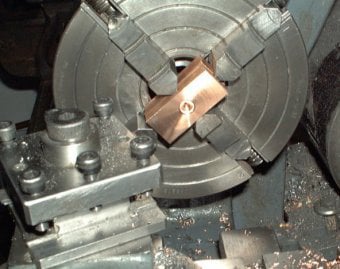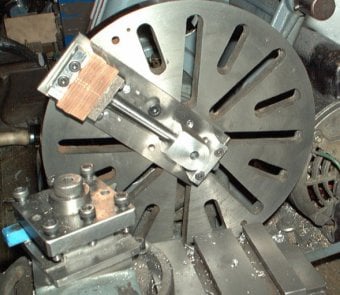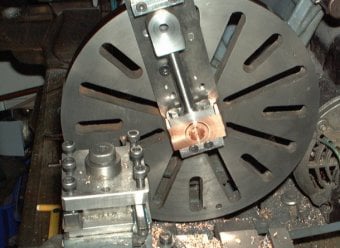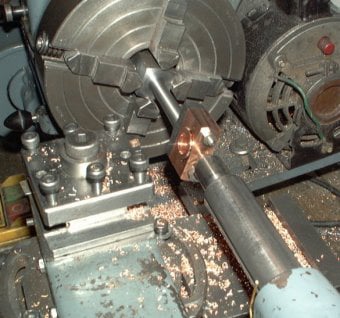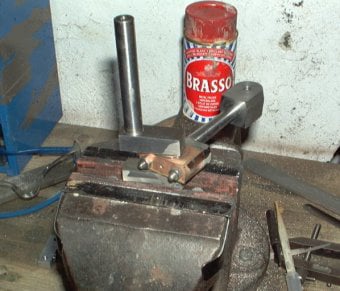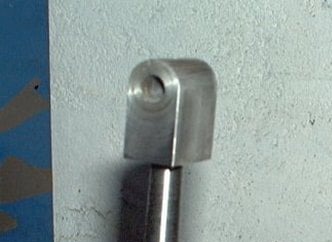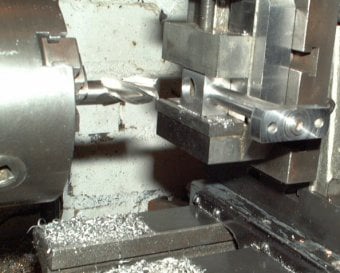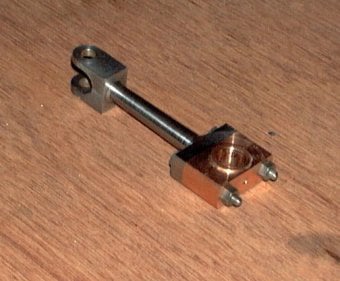
Stuart No 1
Connecting Rod and Big End Bearing
It is important that the 2 holes in the connecting rod are parallel in both planes for the engine to run smoothly.
The process described here machines both the critical holes using a boring tool on the face plate, to keep things as parallel as possible.
